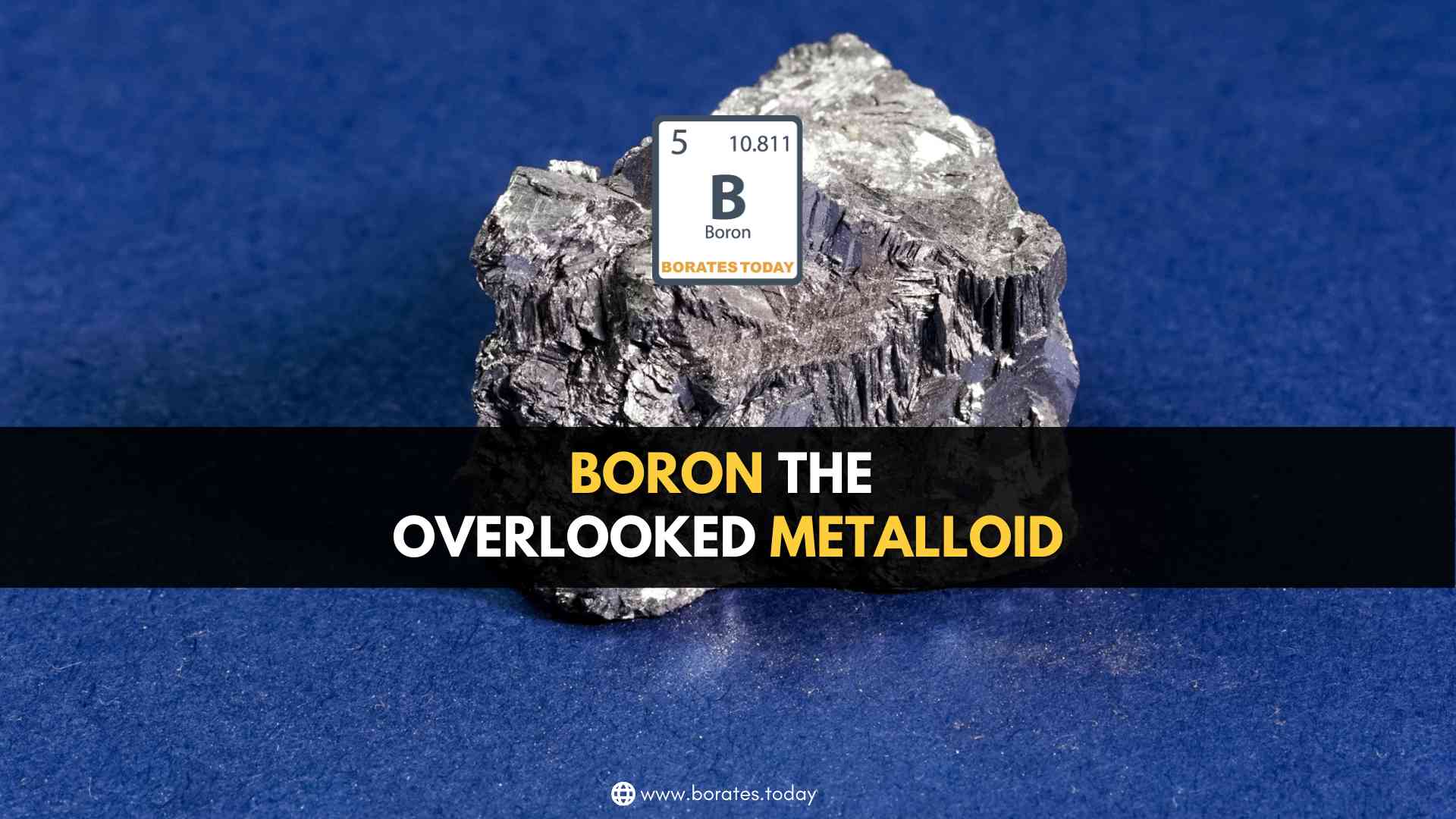Boron, an element nestled in group 13 of the periodic table, has carved out a niche that has intrigued scientists, industrialists, and laypersons alike. Its classification as a metalloid generates substantial discourse, given that its properties oscillate between those of metals and nonmetals. As this article delves into the multifaceted attributes of boron, we shall navigate through its physical and chemical characteristics, its applications, and the broader implications of its classification, thereby uncovering the latent potential of this remarkable element.
To embark upon this exploration, one must first define the term “metalloid.” Metalloids are elements exhibiting a blend of metallic and nonmetallic properties, thus placing them in a unique position on the periodic table. They often possess semi-conductive properties, moderate electronegativity, and a mixed metallic and nonmetallic behavior. Boron finds itself in this category due to its distinctive physical and chemical characteristics, which will be elaborated upon in the subsequent sections.
A close examination of boron’s physical properties reveals a striking dichotomy. The element manifests a lustrous appearance akin to metals, with a grayish-black coloration. This aesthetic quality signifies one facet of its dual nature. Furthermore, boron’s melting point, which hovers around 2075°C, marks it as one of the more thermally resilient elements. Such resistance to heat positions boron as a valuable player in various high-temperature applications.
Aside from thermal properties, boron exhibits unique electrical characteristics. As a semiconductor, it conducts electricity more effectively than nonmetals but with less efficiency compared to metals. This semi-conductive prowess fosters its utility in the electronics industry, where it serves as an essential dopant in silicon-based materials, thereby enhancing their electronic properties. The juxtaposition of metallic conductivity and nonmetallic insulators invites further inquiry into boron’s classification.
Chemically, boron’s behavior reinforces its status as a metalloid. Unlike metals, which readily lose electrons to form cations, boron demonstrates an affinity for forming covalent compounds, often sharing electrons with other nonmetals. This trait underlines boron’s characteristic behavior, as seen in its common compounds such as boron trifluoride and boric acid. Such compounds underscore the element’s propensity for engaging in complex bonding scenarios, solidifying its position between the metallic and nonmetallic realms.
In addressing the applications of boron, the contradiction inherent in its classification emerges even more prominently. Boron’s role in the production of borosilicate glass exemplifies its utility. This durable glass possesses exceptional thermal resistance, rendering it ideal for laboratory glassware and cooking utensils. The incorporation of boron oxide in glass formulations enhances the material’s resilience against thermal shock, highlighting a tangible manifestation of its metalloid characteristics.
Additionally, boron is pivotal in agriculture. Boron compounds are utilized as micronutrients essential for plant growth. In this capacity, boron acts as a catalyst in various plant physiological processes, such as cell wall formation and reproductive development. The significance of boron in agriculture opens pathways for sustainable farming practices and increases food security in a rapidly growing population.
The complexities of boron extend into the realm of nuclear chemistry. Boron’s neutron-absorbing capabilities are exploited in nuclear reactors where boron-containing materials are employed to control neutron flux. Such applications emphasize the element’s relevance in advanced technologies and safety measures within the nuclear energy sector. Herein lies a critical point: the very characteristics that underscore its metalloid classification render it invaluable in high-stakes environments.
The dynamic tension between boron’s classification and its myriad applications incites a re-evaluation of its essential nature. If one considers the historical context, boron was originally classified as a nonmetal until further study delineated its unique properties. This shift in perspective prompts the scientific community to reconsider not only the classification of boron but also the criteria by which metalloids are identified. The conventional binary view of metals and nonmetals appears increasingly simplistic in light of boron’s behavior.
Moreover, the scientific dialogue surrounding boron extends into cutting-edge research areas, such as nanotechnology and materials science. Efforts to exploit boron’s properties at the nanoscale have yielded materials with enhanced strength, lightweight characteristics, and extraordinary thermal stability. These advancements portend a future where boron could play a fundamental role in developing sustainable energy solutions and advanced computing technologies.
In conclusion, the question, “Is boron a metalloid?” is far more nuanced than it may seem. Boron’s classification as a metalloid hinges on a spectrum of characteristics that blend properties of both metals and nonmetals. This complexity fosters curiosity and invites deeper investigation into its multifaceted nature, applications, and implications for future technologies. As scientific exploration continues to unravel the intricacies of boron, one may ponder: do we fully comprehend the potential of this overlooked metalloid, or have we merely scratched the surface? With its diverse applications spanning from agriculture to nuclear energy and materials science, boron is poised to remain a subject of fascination and inquiry for years to come.












